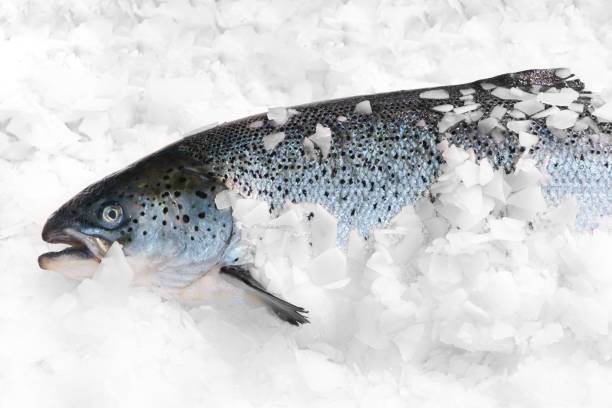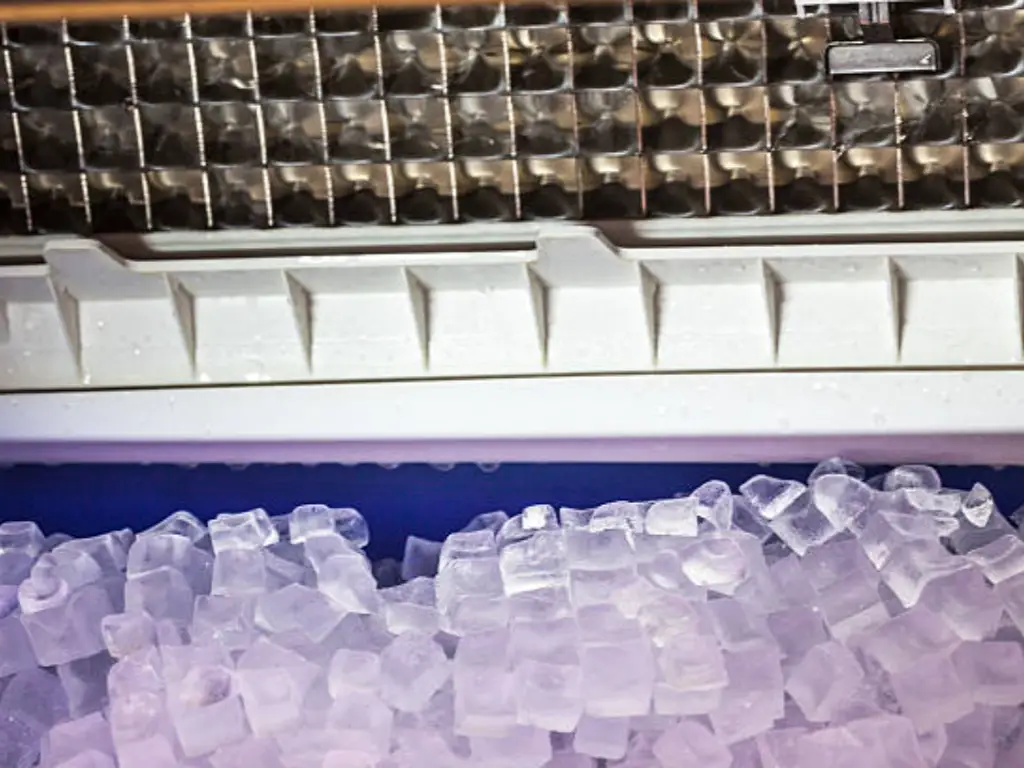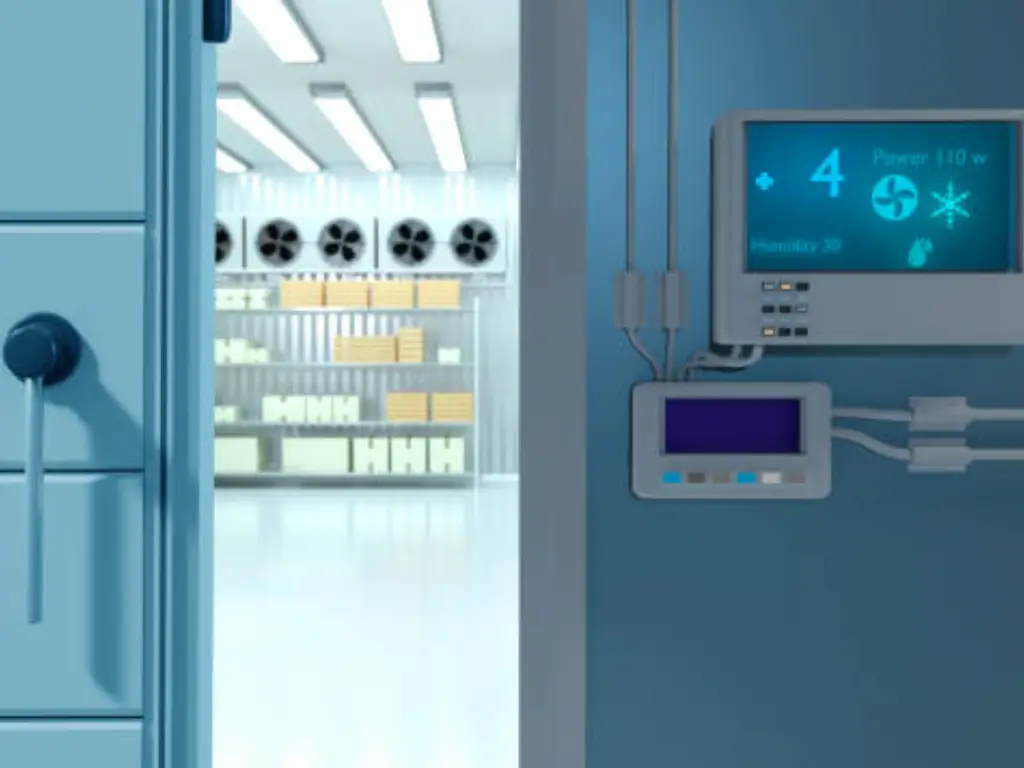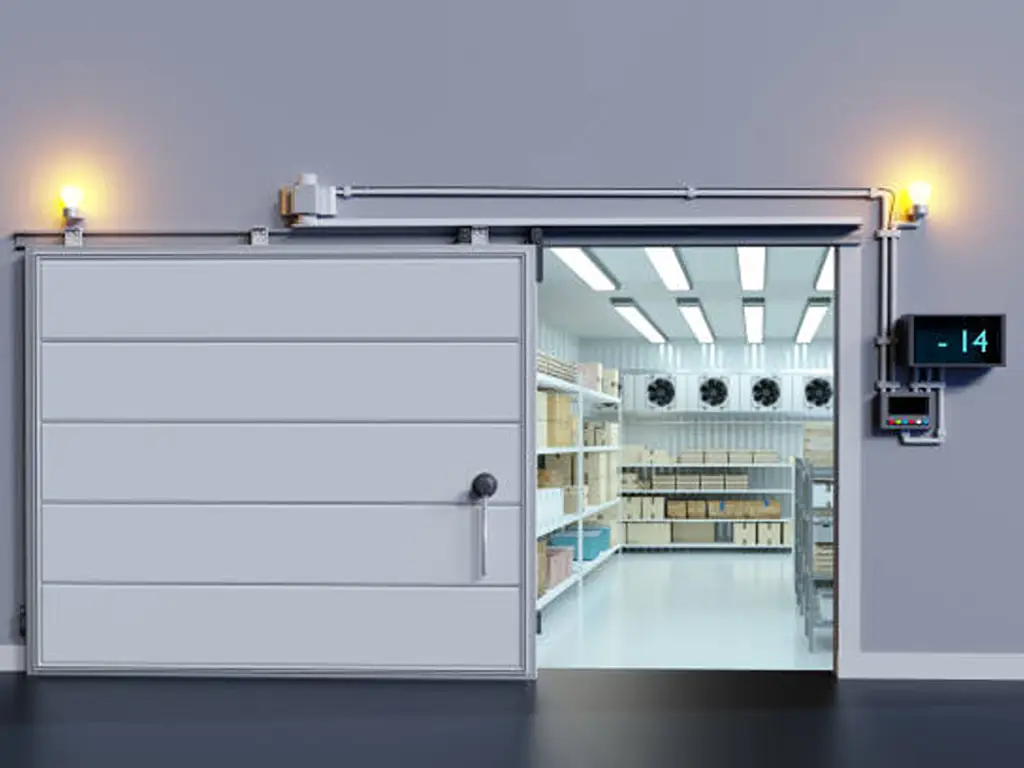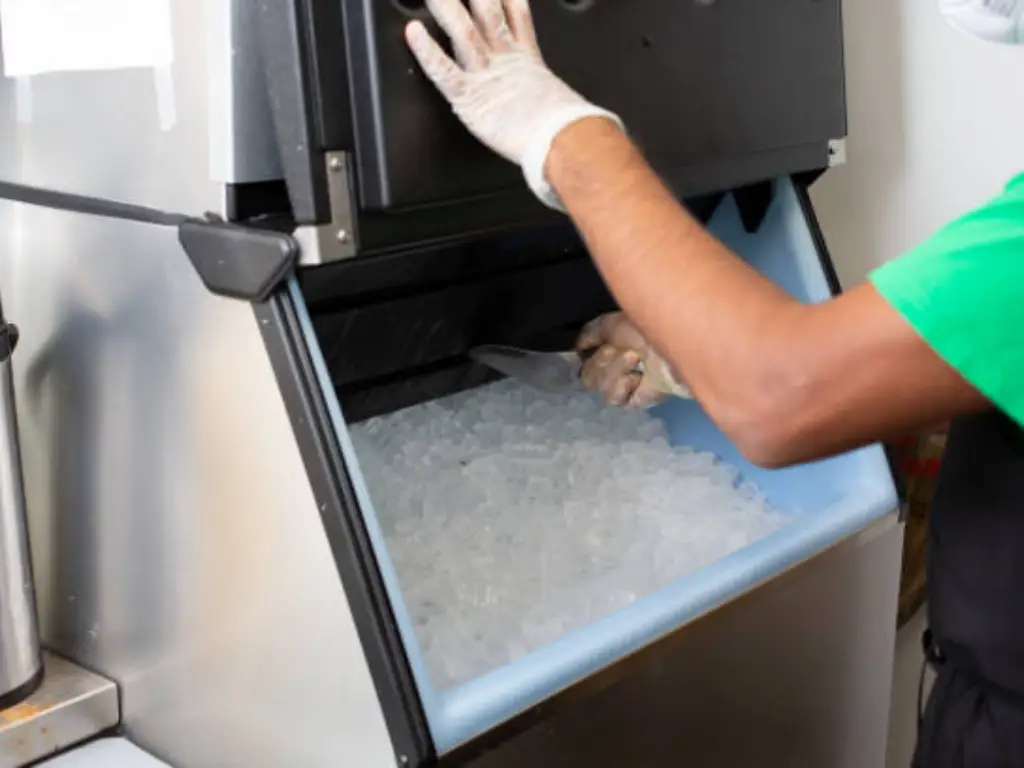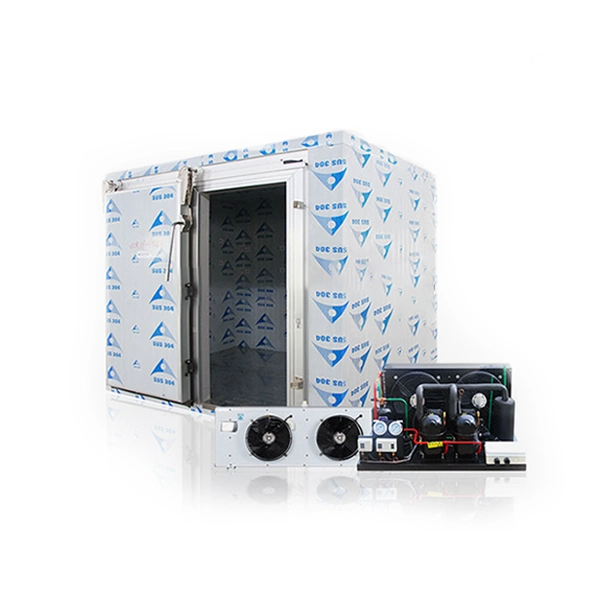
पर हमारे व्यापक गाइड में आपका स्वागत है वॉक-इन कूलर और फ्रीजर. यह लेख इन अपरिहार्य प्रशीतन समाधानों के बारे में सभी आवश्यक जानकारी प्रदान करेगा, सामान्य समस्याओं का निवारण करने और उनकी दक्षता बनाए रखने के लिए उनके घटकों और लाभों को समझने से लेकर.
चाहे आप एक व्यवसाय के स्वामी हों जो अपने संचालन में सुधार करने की कोशिश कर रहे हों या एक जिज्ञासु व्यक्ति वॉक-इन कूलर और फ्रीजर के बारे में अधिक जानने में रुचि रखते हों, यह गाइड एक मूल्यवान संसाधन होगा. गोता लगाएँ और वॉक-इन कूलर और फ्रीजर की दुनिया का पता लगाएं, और पता चलता है कि वे आपके व्यवसाय की सफलता में कैसे योगदान कर सकते हैं.
वॉक-इन कूलर या फ्रीजर क्या है?
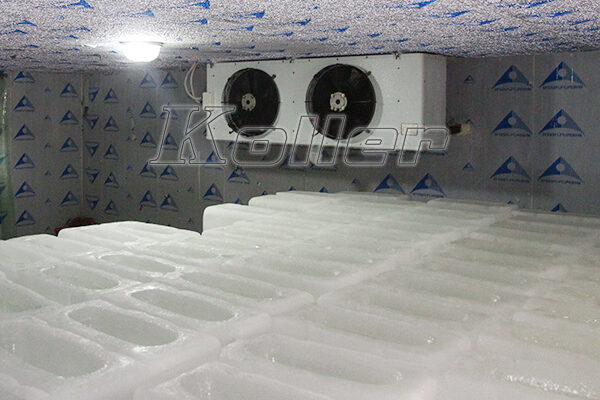
वॉक-इन कूलर या फ्रीजर एक बड़ा प्रशीतित कमरा है जो कर सकता है भोजन को स्टोर और संरक्षित करें, पेय, और कम तापमान पर अन्य विनाशकारी आइटम. मानक रेफ्रिजरेटर या फ्रीजर के विपरीत, वॉक-इन कूलर या फ्रीजर कर सकते हैं बड़ी मात्रा और उत्पादों के आकार को समायोजित करें और आसान पहुंच और संगठन की अनुमति दें. ये कूलिंग रूम उन व्यवसायों के लिए आवश्यक हैं जिन्हें बड़े पैमाने पर भंडारण समाधान की आवश्यकता होती है.
विभिन्न उद्योगों में उनके उपयोग के अलावा, औद्योगिक बर्फ मशीन अनुप्रयोग आमतौर पर ऑन-साइट बर्फ उत्पादन के लिए वॉक-इन कूलर और फ्रीजर में एकीकृत होते हैं, रेस्तरां जैसे व्यवसायों के लिए उन्हें आवश्यक बनाना, सुपरमार्केट, प्रयोगशालाएं, और खाद्य प्रसंस्करण संयंत्र.
वॉक-इन कूलर या फ्रीजर के लाभ
निम्नलिखित वॉक-इन कूलर या फ्रीजर के कुछ बेनिफिट्स हैं:
- खराब और बैक्टीरिया के विकास को रोककर खाद्य उत्पादों के शेल्फ जीवन और गुणवत्ता का विस्तार करना.
- उत्पाद के नुकसान और इन्वेंट्री संकोचन को कम करके खाद्य अपशिष्ट को कम करना और पैसे की बचत करना.
- उत्पाद की उपलब्धता और ताजगी सुनिश्चित करके परिचालन दक्षता और ग्राहकों की संतुष्टि में वृद्धि.
- उचित तापमान और स्वच्छता बनाए रखकर खाद्य सुरक्षा नियमों और मानकों का अनुपालन करना.
वॉक-इन कूलर/फ्रीजर घटक
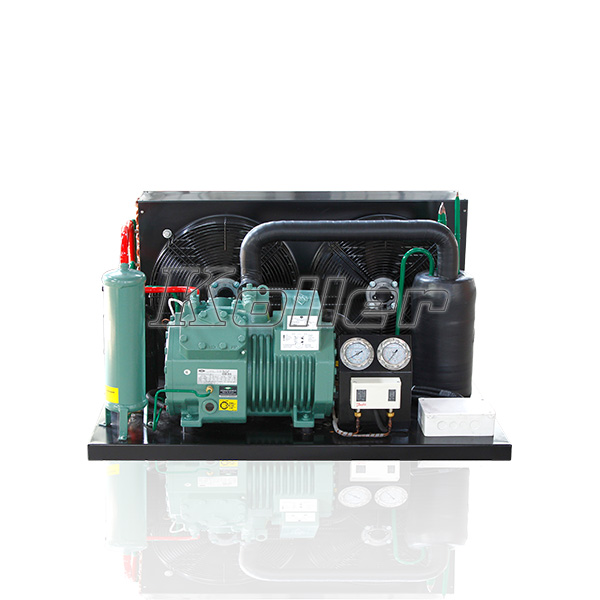
ए वॉक-इन कूलर या एक फ्रीजर में टहलना,इसके रूप में भी जाना जाता है ठंडा कमरा, कई घटक होते हैं जो प्रशीतन के लिए एक नियंत्रित वातावरण बनाने के लिए एक साथ काम करते हैं. इन घटकों में शामिल हैं:
दरवाजा
दरवाजा वॉक-इन कूलर या फ्रीजर का मुख्य प्रवेश द्वार और निकास बिंदु है. यह होना चाहिए अच्छी अछूता, टिकाऊ, और खोलने और बंद करने में आसान. हवा के रिसाव और गर्मी हस्तांतरण को रोकने के लिए इसमें एक उचित सील भी होनी चाहिए. कुछ दरवाजों में विंडोज जैसी विशेषताएं हो सकती हैं, ताले, एलार्म, या अतिरिक्त सुरक्षा और सुविधा के लिए स्वचालित क्लोजर.
दीवारों
दीवारें संरचनात्मक तत्व हैं जो वॉक-इन कूलर या फ्रीजर को संलग्न करते हैं. उन्हें बनाया जाना चाहिए मजबूत सामग्री यह बाहरी मौसम की स्थिति और आंतरिक तापमान में उतार -चढ़ाव का सामना करना पड़ता है. उन्हें गर्मी के नुकसान और संक्षेपण को कम करने के लिए फोम या फाइबरग्लास के साथ भी अछूता होना चाहिए.
फर्श
फर्श वह सतह है जो वॉक-इन कूलर या फ्रीजर के अंदर उत्पादों और उपकरणों के वजन का समर्थन करता है. यह होना चाहिए अटल, पर्ची-प्रतिरोधी, और साफ करना आसान है. जमीन से गर्मी हस्तांतरण को रोकने के लिए इसे भी अछूता होना चाहिए. कुछ वॉक-इन कूलर या फ्रीजर में कोई फर्श नहीं हो सकता है और एक कंक्रीट स्लैब या नींव की आवश्यकता होती है.
इन्सुलेशन
इन्सुलेशन वह सामग्री है जो दीवारों के बीच की जगह को भरती है, फर्श, और वॉक-इन कूलर या फ्रीजर की छत. यह एक बाधा है प्रशीतित कमरे में प्रवेश करने या बचने से गर्मी को रोकता है. यह भी मदद करता है कोल्ड रूम के अंदर एक सुसंगत तापमान और आर्द्रता का स्तर बनाए रखें. सबसे आम प्रकार के इन्सुलेशन पॉलीयुरेथेन फोम और एक्सट्रूडेड पॉलीस्टायरीन फोम हैं.
प्रशीतन तंत्र
प्रशीतन प्रणाली वह तंत्र है जो वॉक-इन कूलर या फ्रीजर के अंदर हवा को ठंडा और प्रसारित करता है. इसमें चार मुख्य घटक होते हैं: एक कंप्रेसर, एक कंडेनसर, एक बाष्पीकरणकर्ता, और एक सर्द.
कंप्रेसर सर्द गैस को उच्च दबाव वाले तरल में संपीड़ित करता है. कंडेनसर तरल सर्द को ठंडा करता है और बाहर की हवा में गर्मी जारी करता है. बाष्पीकरणकर्ता अंदर की हवा से गर्मी को अवशोषित करता है और तरल सर्द को कम दबाव वाली गैस में वाष्पित करता है. रेफ्रिजरेंट फिर चक्र को दोहराने के लिए कंप्रेसर में लौटता है.
मुख्य घटकों के अलावा, कुछ वॉक-इन कूलर और फ्रीजर भी औद्योगिक या उपयोग कर सकते हैं वाणिज्यिक बर्फ बनाने की मशीनें विभिन्न अनुप्रयोगों के लिए साइट पर बर्फ का उत्पादन करने के लिए.
बर्फ के निर्माण से कैसे बचें
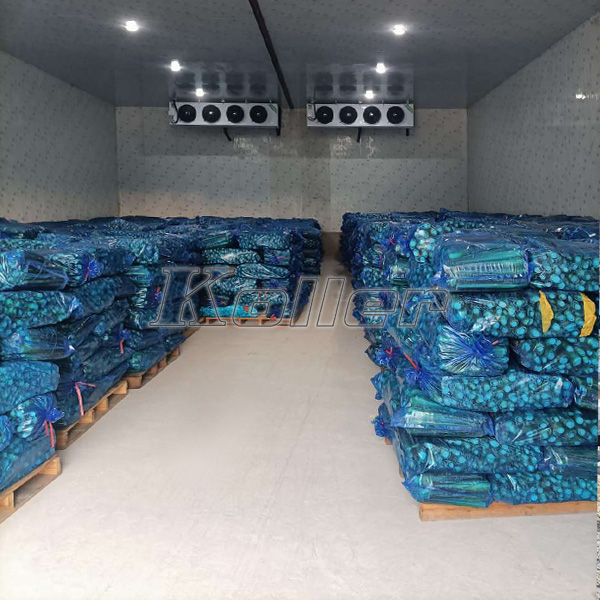
आइस बिल्डअप एक सामान्य समस्या है जो आपके वॉक-इन कूलर या फ्रीजर के प्रदर्शन और दक्षता को प्रभावित कर सकती है. बर्फ दीवारों पर बन सकती है, छत, दरवाजा, बाष्पीकरणीय कुंडल, या विभिन्न कारणों से अपने वॉक-इन कूलर या फ्रीजर के प्रशंसक ब्लेड.
कारण
- अनुचित वायु प्रवाह
यदि आपके वॉक-इन कूलर या फ्रीजर के अंदर पर्याप्त वेंटिलेशन या हवा का परिसंचरण नहीं है, नमी ठंडी सतहों पर जमा और फ्रीज कर सकती है. यह भी हो सकता है अगर एयरफ्लो में अवरोध या अंतराल हैं, जैसे कि भीड़भाड़ वाली अलमारियां, खराब तरीके से रखे गए उत्पाद, या क्षतिग्रस्त दरवाजा सील.
- खराबी डिफ्रॉस्ट सिस्टम
यदि आपके वॉक-इन कूलर या फ्रीजर में एक डीफ्रॉस्ट सिस्टम है जो समय-समय पर बाष्पीकरण कॉइल से बर्फ पिघला देता है, इसे दोषपूर्ण टाइमर के कारण तय करने की आवश्यकता हो सकती है, सेंसर, हीटर, या वाल्व. इससे बर्फ रिंग पर निर्माण हो सकती है और इसकी शीतलन क्षमता कम हो सकती है.
- अपर्याप्त इन्सुलेशन
यदि आपके वॉक-इन कूलर या फ्रीजर में खराब इन्सुलेशन या इन्सुलेशन क्षति है, गर्मी प्रशीतित स्थान में लीक हो सकती है और ठंडी सतहों पर संक्षेपण और ठंड का कारण बन सकती है.
पैमाने
अपने वॉक-इन कूलर या फ्रीजर में आइस बिल्डअप से बचने के लिए, तुम्हे करना चाहिए:
- नियमित रूप से जाँच करें
आइस बिल्डअप के संकेतों के लिए नियमित रूप से अपने वॉक-इन कूलर या फ्रीजर का निरीक्षण करें और इसे हटाने के लिए उचित कार्रवाई करें. तुम्हे करना चाहिए दरवाजा बंद रखें जितना संभव हो सके और गर्म या नम वस्तुओं को रखने से बचें वॉक-इन कूलर या फ्रीजर के अंदर. के साथ परामर्श करें बर्फ बनाने की मशीन निर्माता अपने उत्पादों में आइस बिल्डअप को रोकने और प्रबंधित करने के लिए सर्वोत्तम प्रथाओं के लिए.
- पेशेवर मदद लें
यदि आप बिक्री के लिए अपनी बर्फ बनाने की मशीन में गंभीर या आवर्ती बर्फ बिल्डअप को नोटिस करते हैं, एक योग्य प्रशीतन तकनीशियन या ए से संपर्क करें वॉक-इन कूलर निर्माता अपनी इकाई का निरीक्षण और मरम्मत करने के लिए. वे बर्फ के निर्माण के कारण किसी भी अंतर्निहित मुद्दों की पहचान कर सकते हैं और ठीक कर सकते हैं, जैसे दोषपूर्ण घटक, अनुचित स्थापना, या अपर्याप्त वेंटिलेशन.
सफाई & रखरखाव

अपने को बनाए रखना कूलिंग रूम स्वच्छ और अच्छी तरह से बनाए रखा इष्टतम प्रदर्शन और दीर्घायु के लिए आवश्यक है. यह आपको बर्फ के निर्माण को रोकने में भी मदद कर सकता है, भोजन संदूषण, और ऊर्जा अपशिष्ट. यहां अपने वॉक-इन कूलर या फ्रीजर को साफ करने और बनाए रखने के लिए कुछ सुझाव दिए गए हैं:
फ़ायदे
नियमित रूप से अपने वॉक-इन कूलर या फ्रीजर को साफ करना और बनाए रखना आपकी मदद कर सकता है:
- अपनी इकाई और उसके अंदर के उत्पादों की उपस्थिति और स्वच्छता को बढ़ाएं.
- अपनी इकाई और उसके घटकों के जीवनकाल और दक्षता का विस्तार करें.
- टूटने के जोखिम को कम करें, मरम्मत, और प्रतिस्थापन.
- ऊर्जा बिल और परिचालन लागत पर पैसे बचाएं.
- स्वास्थ्य और सुरक्षा कोड और नियमों का पालन करें.
दैनिक & गहरी सफाई
वॉक-इन कूलर या फ्रीजर के लिए एक दैनिक सफाई दिनचर्या स्पिल्स को खत्म करने के लिए आवश्यक है, दाग, टुकड़ों, या मलबे जो फर्श पर इकट्ठा हो सकते हैं, दीवारों, अलमारियों, या दरवाजे. एक झाड़ू, एमओपी, कपड़ा, या वैक्यूम क्लीनर कुशलता से इन मुद्दों से निपटेंगे.
इसके अतिरिक्त, दरवाजा गैसकेट को पोंछने और एक नम कपड़े से संभालने से गंदगी और मोल्ड संचय से बचने में मदद मिलती है. इसके अलावा अपने वॉक-इन कूलर या फ्रीजर की गहरी सफाई भी करें, आपकी इकाई के उपयोग और स्थिति के आधार पर.
एक सौम्य डिटर्जेंट, गर्म पानी, और एक नरम ब्रश या स्पंज आपकी इकाई की सतहों को प्रभावी ढंग से साफ कर देगा. अपघर्षक क्लीनर को स्पष्ट करना महत्वपूर्ण है, विरंजित करना, अमोनिया, या अन्य कठोर रसायन जो खत्म या इन्सुलेशन को नुकसान पहुंचा सकते हैं. सफाई के बाद, सुनिश्चित करें कि सतहों को पूरी तरह से rinsed और सूखा है.
नियमित रखरखाव
अपने वॉक-इन कूलर या फ्रीजर को साफ करने के अलावा, आपको भी प्रदर्शन करना चाहिए नियमित रखरखाव सब कुछ सही तरीके से काम करने के लिए जाँच करता है. कुछ कार्यों को आपको शामिल करना चाहिए:
- दरवाजा सील की जाँच करना किसी भी दरार के लिए, आँसू, या अंतराल जो वायु रिसाव की अनुमति दे सकते हैं. अपनी इकाई के अंदर तापमान और आर्द्रता के स्तर की निगरानी करना और उन्हें आवश्यकतानुसार समायोजित करना.
- किसी भी संकेत के लिए जाँच बर्फ का निर्माण, वाष्पीकरण, या पानी का रिसाव और उन्हें तुरंत हल करना.
- उपकरण खराबी के लिए जाँच, जैसे अजीब शोर, कंपन, या गंध, और उन्हें एक तकनीशियन को रिपोर्ट करना.
- पहना हुआ या क्षतिग्रस्त भागों की जगह, जैसे गास्केट, टिका, प्रशंसक, या फिल्टर.
सामान्य समस्याओं का निवारण करना
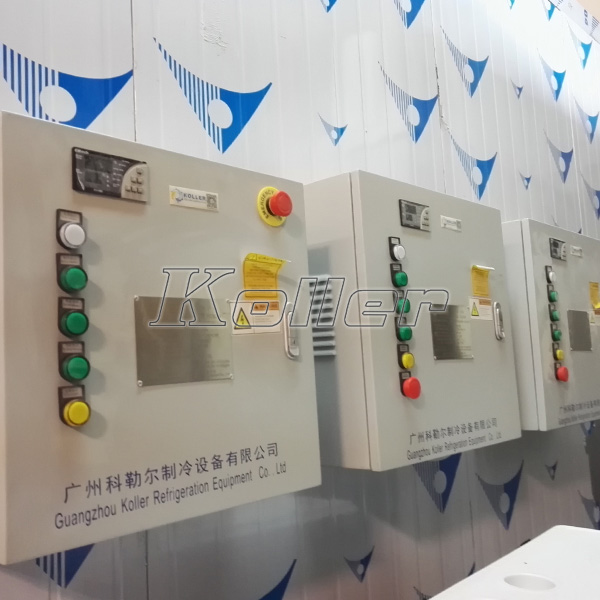
यहां तक कि उचित सफाई और रखरखाव के साथ, आपके वॉक-इन कूलर या फ्रीजर को अभी भी इसके प्रदर्शन और दक्षता को प्रभावित करने वाली कुछ सामान्य समस्याओं की आवश्यकता हो सकती है. इनमें से कुछ समस्याओं में शामिल हैं:
तापमान असंगति
यदि आपका वॉक-इन कूलर या फ्रीजर एक सुसंगत तापमान स्तर बनाए नहीं है, इसके कारण हो सकता है:
- एक दोषपूर्ण थर्मोस्टैट जो तापमान को सही ढंग से पढ़ या विनियमित नहीं कर रहा है.
- एक गंदा वाष्पीकरण कॉइल जो गर्मी को प्रभावी ढंग से अवशोषित नहीं कर रहा है.
- एक क्लॉग्ड कंडेनसर कॉइल जो कुशलता से गर्मी जारी नहीं कर रहा है.
- एक कम सर्द स्तर जो हवा को पर्याप्त रूप से ठंडा नहीं कर रहा है.
इन समस्याओं का निवारण करने के लिए, तुम्हे करना चाहिए:
- थर्मोस्टैट सेटिंग्स और अंशांकन की जाँच करें और यदि आवश्यक हो तो उन्हें समायोजित करें.
- बाष्पीकरणकर्ता कॉइल को साफ करें और यदि आवश्यक हो तो इसे डीफ्रॉस्ट करें.
- कंडेनसर कॉइल को साफ करें और उसके आसपास किसी भी मलबे या अवरोधों को हटा दें.
- सर्द स्तर और दबाव की जाँच करें और जरूरत पड़ने पर इसे फिर से भरें.
उपकरण खराबी
यदि आपका वॉक-इन कूलर बिल्कुल भी काम नहीं कर रहा है या असामान्य आवाज़ या बदबू आ रही है, इसके कारण हो सकता है:
- बिजली की आपूर्ति को काटने वाले एक उड़ा फ्यूज या ट्रिप्ड सर्किट ब्रेकर.
- एक ढीला या टूटा हुआ विद्युत कनेक्शन शॉर्ट सर्किट या आग का खतरा पैदा कर रहा है.
- एक पहना हुआ या क्षतिग्रस्त कंप्रेसर जो सर्द को ठीक से संकुचित नहीं कर रहा है.
- एक दोषपूर्ण प्रशंसक मोटर जो प्रशंसक ब्लेड को सुचारू रूप से नहीं घूम रही है.
इन समस्याओं का निवारण करने के लिए, तुम्हे करना चाहिए:
- फ्यूज बॉक्स या सर्किट ब्रेकर पैनल की जाँच करें और उन्हें बदलें या रीसेट करें.
- विद्युत वायरिंग और कनेक्शन की जांच करें और यदि आवश्यक हो तो उन्हें कस लें या मरम्मत करें.
- ओवरहीटिंग के किसी भी संकेत के लिए कंप्रेसर की जाँच करें, लीक, या शोर और जरूरत पड़ने पर इसे बदलें.
- पहनने के किसी भी संकेत के लिए प्रशंसक मोटर की जाँच करें, आंसू, या शोर और जरूरत पड़ने पर इसे बदलें.
निष्कर्ष
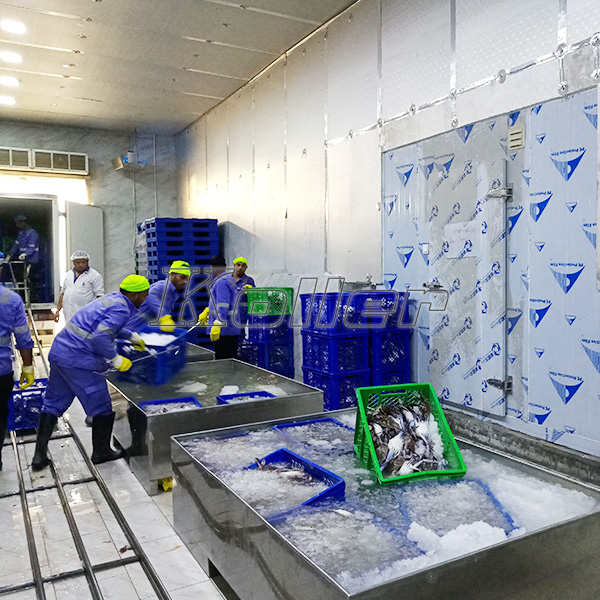
वॉक-इन कूलर और वॉक-इन फ्रीजर उन व्यवसायों के लिए महत्वपूर्ण हैं जिन्हें खराब करने योग्य वस्तुओं के लिए बड़े पैमाने पर भंडारण समाधान की आवश्यकता होती है. उचित देखभाल, रखरखाव, और समस्या निवारण इष्टतम प्रदर्शन और दक्षता के लिए आवश्यक हैं. इस लेख के दिशानिर्देशों और युक्तियों के बाद, आप यह सुनिश्चित कर सकते हैं कि आपका वॉक-इन कूलर या फ्रीजर वर्षों तक सुचारू रूप से संचालित हो.
जब खरीद रहे हैं बिक्री के लिए वॉक-इन कूलर या एक बिक्री के लिए वॉक-इन कूलर, एक विश्वसनीय चुनें बर्फ बनाने की मशीन निर्माता एक उच्च गुणवत्ता और कुशल उत्पाद की गारंटी देने के लिए. यदि आवश्यक हो तो विशेषज्ञ सलाह और समर्थन के लिए एक पेशेवर प्रशीतन सेवा प्रदाता से परामर्श करें.

